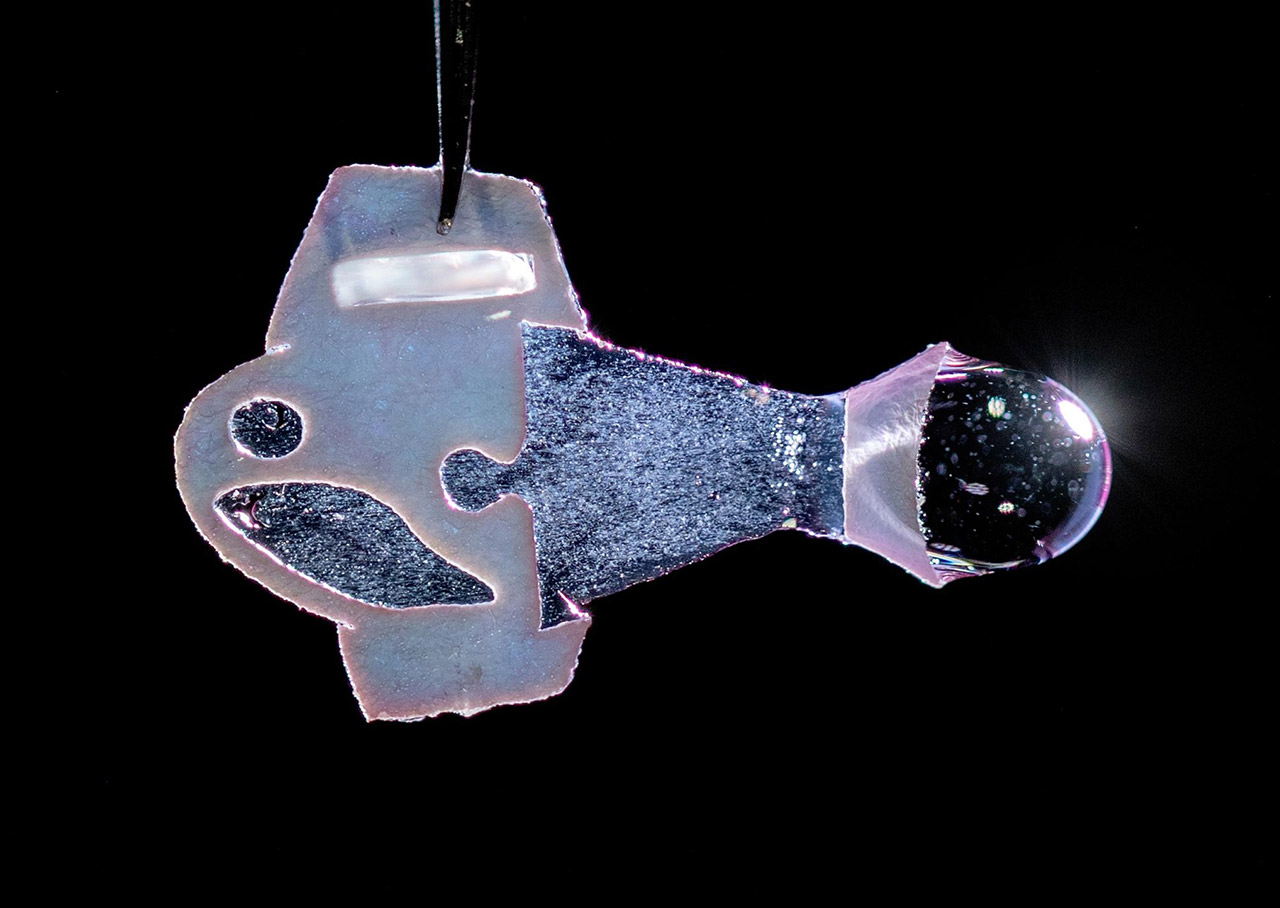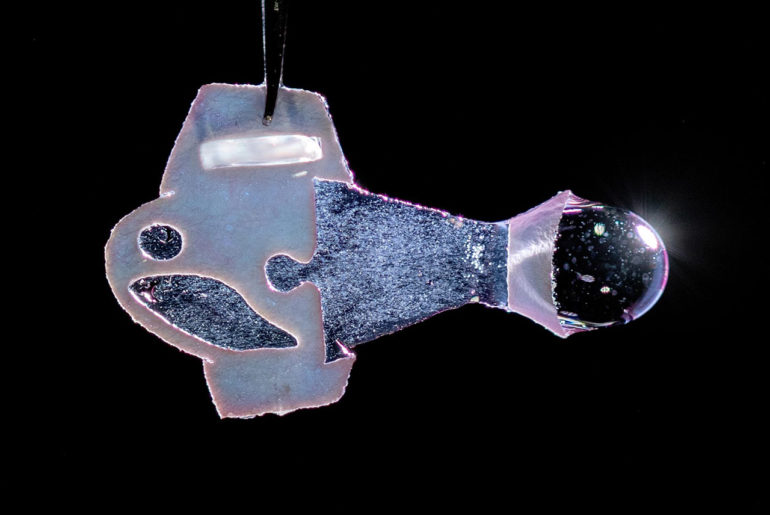
Photo credit: Michael Rosnach, Keel Yong Lee, Sung-Jin Park, Kevin Kit Parker
Researchers at Harvard University in collaboration with Emory University have developed the first autonomous biohybrid fish made from human stem-cell derived cardiomyocytes. The creation was inspired by the shape and swimming motion of a zebrafish, consisting two muscle cells layers, one on each side of the tail fin. When one side contracts, the other one stretches, thus triggering the opening of a mechanosensitive protein channel, which causes a contraction, eventually leading to a closed loop system that can propel the fish for more than 100 days.
This innovative biohybrid fish actually improves with age because its muscle contraction amplitude, maximum swimming speed, and muscle coordination all increase for the first month as the cardiomyocyte cells mature. As more time passes, the biohybrid fish eventually reaches the speeds and swimming efficacy similar to zebrafish in the wild.
- Features a true-to-life model car - a LEGO Technic replica version of the BATMOBILE, the iconic super-hero car, as seen in the 2022 movie
- There's lots to explore in this epic car model, with 2 light bricks included, plus an 8-cylinder engine with moving pistons and a spinning flame
- Other features of this LEGO BATMOBILE model car include front steering, differential on rear wheels, plus opening doors and hood

Our ultimate goal is to build an artificial heart to replace a malformed heart in a child. Most of the work in building heart tissue or hearts, including some work we have done, is focused on replicating the anatomical features or replicating the simple beating of the heart in the engineered tissues. But here, we are drawing design inspiration from the biophysics of the heart, which is harder to do,” said Kit Parker, the Tarr Family Professor of Bioengineering and Applied Physics at the Harvard John A. Paulson School of Engineering and Applied Sciences (SEAS) and senior author of the paper.




